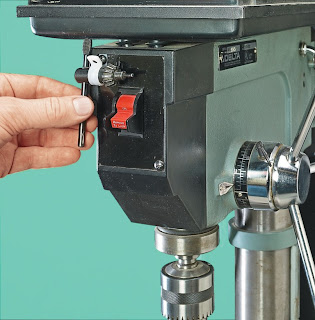 I often use medium-density fiberboard (MDF) for my shop jigs and fixtures. There are many things I like about MDF. It's stable, heavy, and costs about half as much as cabinet-grade plywood. One thing I don't like about MDF is its tendency to split along the edge of a workpiece. But, luckily, there are a couple of things you can do to avoid this problem. MDF tends to split most often when drilling and screwing in its edge, especially when using a tapered woodscrew. It acts like a wedge to drive the workpiece apart. So I've gotten into the habit of using a straight-shanked screw.
I often use medium-density fiberboard (MDF) for my shop jigs and fixtures. There are many things I like about MDF. It's stable, heavy, and costs about half as much as cabinet-grade plywood. One thing I don't like about MDF is its tendency to split along the edge of a workpiece. But, luckily, there are a couple of things you can do to avoid this problem. MDF tends to split most often when drilling and screwing in its edge, especially when using a tapered woodscrew. It acts like a wedge to drive the workpiece apart. So I've gotten into the habit of using a straight-shanked screw.However, a straight-shanked screw isn't a cure-all. Even when using a pilot hole and the right screw, MDF can still split out. So one final precaution is to support the sides by clamping an ordinary handscrew across the workpiece, see the photo. It makes it almost impossible to split the MDF.
You can have woodworking tips like this sent to your emailbox each week from the editors of Woodsmith magazine. Sign-up for etips here.


 for bamboo at ThisNext, and you'll get a sense of the range of bamboo products available.
for bamboo at ThisNext, and you'll get a sense of the range of bamboo products available.































